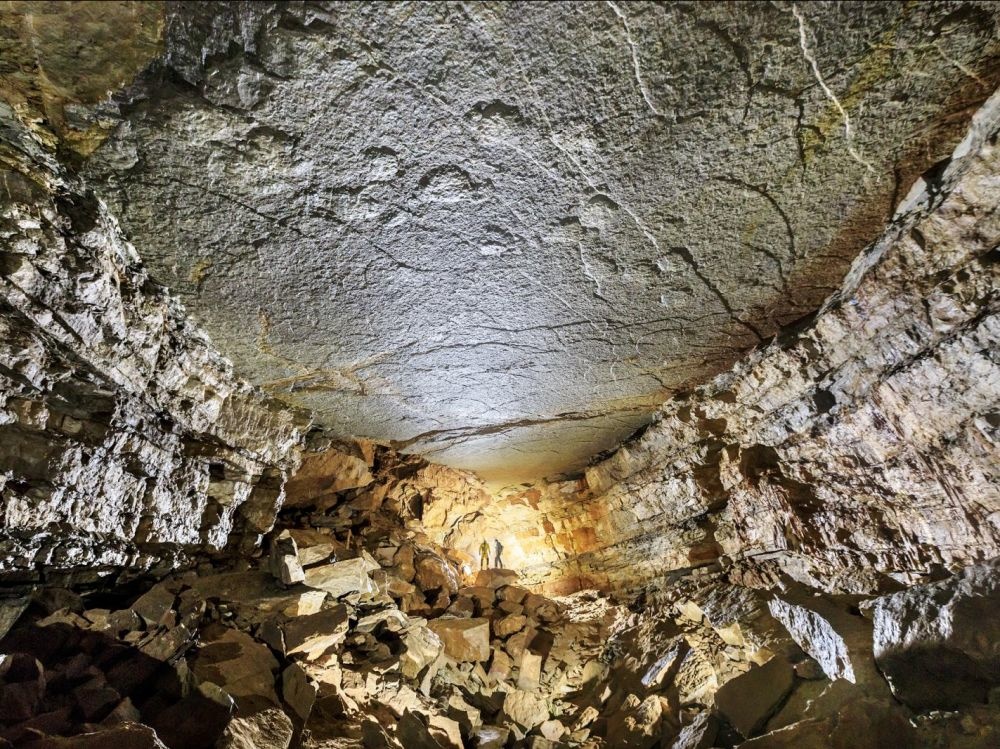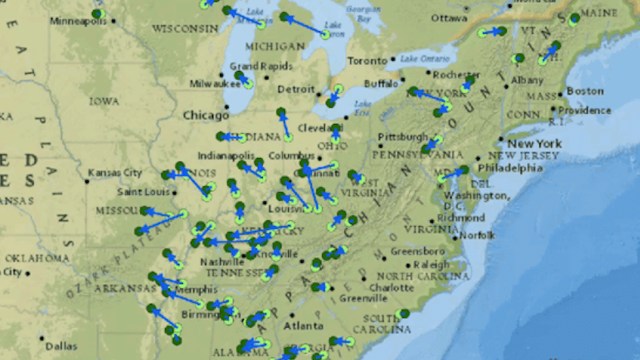Giant dinosaur tracks found in Scotland reveal the secrets of the Jurassic period

Over 50 dinosaur tracks were found by researchers on the Scottish Isle of Skye. The footprints date back to 174 million to 164 million years ago and help us understand the Middle Jurassic period. Not many fossil sites have been found from that time so far and the new discovery is being seen as very significant.
The study was conducted by researchers from the University of Edinburgh and the Chinese Academy of Sciences. They believe that the footprints were left by two kinds of dinosaurs. One was a long-necked sauropod, the largest animals on earth during that time. These beasts reached up to 18 meters in length, weighed over 10,000 pounds, and are considered cousins of the Brontosaurus. The other kind dinosaur that frequented the area was likely a theropod, known for sharp teeth and being related to the Tyrannosaurus Rex.
The University of Edinburg’s paleontologist Stephen Brusatte co-authored the study and thinks the key takeaway of the find is in what it tells us about dinosaur interaction:
“We’re actually seeing these dinosaurs interacting with each other and interacting with their environment,” said Brusatte.

Sauropods. Credit: Wikipedia.
Paige dePolo, the study’s leader, explained that the study showed how sauropods were in the area much earlier than previously thought.
“This tracksite is the second discovery of sauropod footprints on Skye,” elaborated dePolo. “It was found in rocks that were slightly older than those previously found at Duntulm on the island and demonstrates the presence of sauropods in this part of the world through a longer timescale than previously known.”
The discovery is being lauded for how much it can tell us about the Middle Jurassic Period, in particular, an important time in dinosaur evolution when meat-eating tyrannosaurs and the first birds came exist. The find was made at Brothers’ Point on the north-east coast of the Island of Skye. While it is now a collection of craggy ridges and stunning rocky beaches, the area used to be subtropical in the days of the dinosaurs, with lagoons and rivers.

Theropods. Credit: Science Photo Library.
The tracks themselves were discovered by Dr. Brusatte’s graduate student Davide Foffa in 2016 while on a trip to the island. To get a closer look, the scientists used a drone to photograph and map the area.
What’s next for the researchers? They plan to explore the island for more giant footprints.
You can find their study published in the Scottish Journal of Geology.





